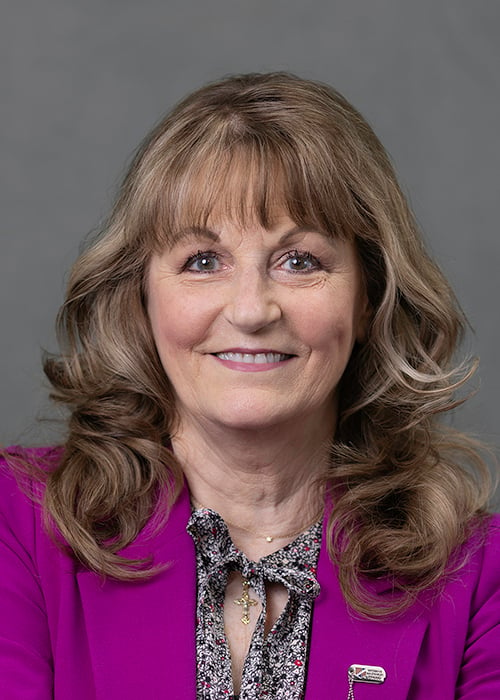Combating wait times and addressing payment injustices, all in the midst of the lowest staffing levels in 27 years, will be the top priorities of the Social Security Administration (SSA) in the immediate future, the agency’s top official told MOAA last month.
SSA Commissioner Martin O’Malley, former governor of Maryland and mayor of Baltimore, took over his leadership role in December. He met May 31 with representatives of the Leadership Council of Aging Organizations (LCAO), a group of 68 organizations representing the interest of older Americans. MOAA has been a coalition member for more than two decades.
O’Malley discussed the two main crises facing the administration: solvency of the Social Security’s Old-Age, Survivors, and Disability Insurance (OASDI) Trust Fund and customer service. Reports since 2012 have sounded the alarm on the depletion of trust fund reserves between the years 2033 and 2035.
While the solvency issue is critical, O’Malley said the more immediate crisis is the administration’s ability to provide quality customer service despite the lowest staffing levels in a quarter-century. SSA is aggressively working to tackle the commissioner’s top three customer service priorities: Reducing processing time for disability determinations, reducing the wait for beneficiaries using the national 800 number (800-772-1213), and addressing overpayment and underpayment problems.
[SOCIAL SECURITY 101: Understanding Spousal Benefits and Survivor Benefits]
Disability Determinations
Of the three priorities, reducing administrative burdens and improving access for people with disabilities is the most difficult to solve, O’Malley said. Average wait times for Social Security Disability Insurance (SSDI) determinations vary significantly across the U.S. and territories. Maryland averages 359 days to provide an initial determination, for example, while averages in Puerto Rico, Rhode Island, and Vermont are 133, 137, and 138 days, respectively.
SSDI appeals last even longer, taking hundreds of days to complete a disability hearing with the worst delays in the western U.S.
[FROM NEXTGOV: 30,000 Died in Fiscal 2023 Waiting for Disability Decisions From Social Security]
SSA is making progress in reducing the number of disability hearings to its lowest level in 30 years. A person’s medical conditions must prevent them from engaging in substantial gainful activity to qualify for SSDI.
Some of the changes being made to address the administrative burdens and facilitate determinations include:
- Reduce the past relevant work period from 15 to 5 years. SSA’s new rule, effective June 8, will reduce the burden for both claimant and staff while providing sufficient information to make an accurate claim decision.
- Streamline how the administration counts income when calculating Supplemental Security Income (SSI). SSI is a national income program administered by SSA helping aged, blind, and disabled people and children who have little or no income fulfill basic needs such as food, shelter, and clothing. Starting Sept. 30, SSA will no longer count food assistance when calculating SSI eligibility; set a nationwide policy that simplifies rental subsidy calculation; and change the definition of “public assistance household” to include Supplemental Nutrition Assistance Program (SNAP, formerly known as food stamps) recipients and households where not all members receive public assistance.
National 800 Number
The administration has taken steps to reduce long wait times and frustrations for customers using the national number. Wait times have gone down from 42 to 24 minutes — the SSA’s goal is to achieve a 12-minute average by the end of FY 2025.
Additional improvements include updating its phone system to easily re-route calls to available agents; offering a call-back option to customers; registering field office phone numbers to not appear as spam calls; and providing customers with more accurate estimates of processing timelines for disability decisions.
Overpayments and Underpayments
SSA pays more than 72 million people and is responsible by law to recoup overpayments. The administration has been grappling with how best to deal with the high volume of beneficiary overpayments as well as underpayments, which can occur when SSA relies on incomplete, inaccurate, or outdated information to calculate benefits.
Notices of overpayments in particular can be extremely frustrating and difficult financially, especially those on a fixed income. SSA has taken steps to reduce customer frustration create a more flexible process to address improper payments by:
- Stopping collection of 100% of an overpaid beneficiary’s monthly Social Security benefit by default if they fail to respond to repayment requests. Instead, it will default to withholding 10% of the monthly benefit, the same rate as the SSI program.
- Reframing guidance and procedures to shift the burden of proof away from the claimant when determining fault in overpayment.
- Approving repayment plans of up to 60 months.
- Making it easier to request a waiver of repayment in no-fault cases.
- Changing the SSI underpayment threshold process to allow for quicker review of payments and reduction in backlog cases.
[RELATED: More Financial Resources From MOAA]
Facing Challenges
The number of new SSA beneficiaries is rising to a record-high rate of 12,000 retirees a week. While SSA’s current budget provides relief for some parts of the customer service crisis and allows for hiring additional employees, its solvency and customer service woes could be solved with adequate funding and attention by Congress, O’Malley told LCAO members.
“Our chronic underfunding directly drives the services we can provide,” O’Malley said. “SSA needs sufficient well-trained employees to meet the needs of those we serve. Restoring our declining budget by 1.2% will help resolve our customer service crisis and puts us on the right path to be a more efficient, responsive, and customer-focused service organization.”
 Tips for Lifelong Caregiving
Tips for Lifelong Caregiving
MOAA has partnered with the Elizabeth Dole Foundation to provide an online resource outlining legal and financial support available to multiple generations of caregivers.

